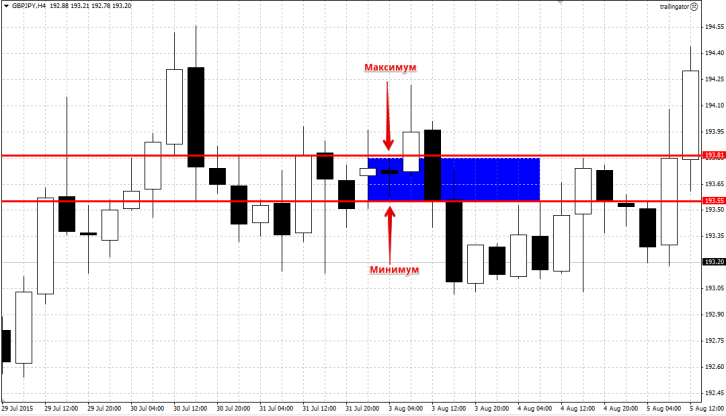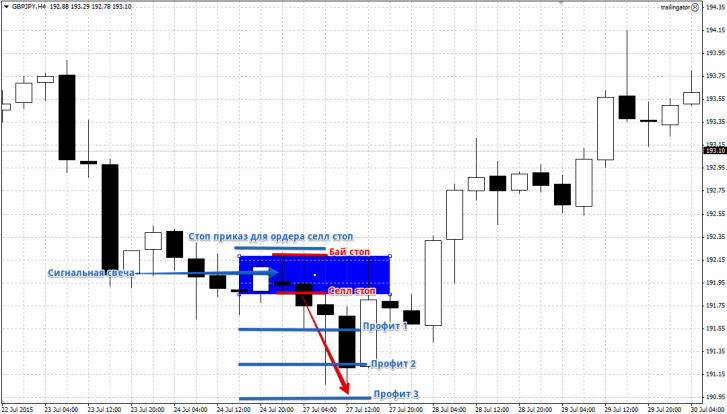Trading strategy 4H Box Breakout
The success of trading largely depends on the chosen trading strategy. However, as practice shows, most of them require the trader to stay at the computer around the clock, monitoring indicator readings, as well as a flexible and lightning-fast reaction to the release of any economic readings.
However, as practice shows, most of them require the trader to stay at the computer around the clock, monitoring indicator readings, as well as a flexible and lightning-fast reaction to the release of any economic readings.
But what should an ordinary person who has a family, a job, a business do? Not all of us live by trading, and the high stability of such earnings can be debated for a long time.
Unfortunately, there are a lot of myths around trading on the stock exchange that money is easy, there is no dependence on the employer, and you are left to your own devices and have complete independence.
In theory, this is true, but in reality, a successful trader spends more time at his desk than any of you would spend in an office in your life. Not to mention the psychological stress and insomnia that can torment you at night due to the fact that you may lose money.
Yes, in fact, the pro doesn’t look like in the advertisement, but with big glasses and bleary-eyed eyes.
The 4H Box Breakout strategy is a non-indicator strategy created for people who are very limited in time and ability to trade.
Not all of us are chasing millions, but most of us want to increase and preserve our savings by plunging into the world of trading as little as possible. Its essence is that you need to get up at four in the morning once a week on Monday and place a couple of pending orders. The strategy is designed for trading the pound/yen pair ( GBP/JPY ).
The trading tactic is based on building a box on a four-hour candle that closes at 4 am. Simply put, we will work with the first close of the four-hour candle on Monday.
Since the strategy is based on a range that is built on a Japanese candlestick, you can easily apply the strategy on any currency pair. So, now let’s move on from superficial words to practice.
To begin, open the GBP/JPY currency pair and switch it to a four-hour chart. In order to draw a box (dianazon), use the first four-hour candle that closes on Monday. At the maximum and minimum of the candle, draw two horizontal lines that seem to resemble a box. You can also simply use the rectangle shape tool to select this area. Also, if the price is very close to the minimum or maximum of the candle, it is allowed to make an indent of 5-10 points from the maximum and minimum of the candle. Thus, after marking you should have a box that looks something like this:
 After you have formed a box, you should trade on the breakdown of the upper or lower border.
After you have formed a box, you should trade on the breakdown of the upper or lower border.
If you are constantly at the computer, then open a buy order if the price breaks the upper limit, and you should enter a sell order if the price breaks the lower limit of the box. The stop order must be placed beyond the opposite border of the box.
The profit is usually set equal to the size of the box in points. Now let’s consider the option of using the 4H Box Breakout trading strategy if you are unable to be at your workplace. To do this, two pending orders, buy stop and sell stop, .
We set a buy stop order at the high of the four-hour candle and a sell stop at the low of the candle.
It is also worth setting a profit for orders, which is equal to the size of the box in points. The stop order must be placed 5-10 points from the opposite border of the box. Simply put, for a buy stop order, place the order at a distance of 5-10 points from the sell stop order. For a sell stop order, exactly the opposite is true. Often, after a pending order is triggered, the price moves through more points than the size of the box.
Therefore, many traders practice closing positions to achieve three goals. The first profit is placed at the distance of a box, the second at a distance of two boxes, and the third at a distance of three boxes from the price. In simple words, profit is 1 -20 points, profit is 40 points, profit is 3 - 60 points from the entry point. Thus, you have the opportunity to squeeze maximum profit from the market with minimal risks. An example of placing orders with targets is shown in the picture below:
 If we consider the strategy in its original form, then when one pending order is triggered, the second one is not deleted.
If we consider the strategy in its original form, then when one pending order is triggered, the second one is not deleted.
However, as the practice of many traders has shown, if a buy stop order is triggered, then the opposite pending order should be removed, because if the price starts to jump sharply, then there is a high probability that the second order will also be triggered. As a result, you may just end up with a regular lock, or even worse, catch two stop orders.
Therefore, when one of the orders is triggered, the second one should be deleted immediately. Thank you for your attention and good luck trading with the 4H Box Breakout strategy!


